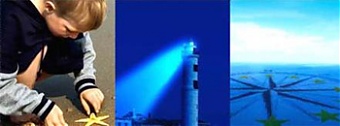Analytics, Baltic States – CIS, Ecology, Energy, EU – Baltic States, Transport
International Internet Magazine. Baltic States news & analytics
Thursday, 11.12.2025, 23:52
Baltic Sea Strategy delivers tangible results
 Print version
Print version |
|---|
The strategy fits within the 'Northern Dimension' cooperation model, developed with Norway and Russia in the past ten years, which brings together external and cross-border policies to promote security and stability in the region, and to address environmental challenges including issues such as nuclear waste and water management, informs LETA referring to EURACTIV.
After the first year of the strategy, the European Commission believes that positive results can already be seen.
This message was underlined at the 1st Annual Forum for the EU Strategy for the Baltic Sea Region, which took place in Tallinn earlier this month and was attended by political representatives and officials from national and regional governments in all the participating countries.
Addressing the conference in the Estonian capital, Johannes Hahn, the EU commissioner in charge of regional policy, emphasized that the Baltic Sea Strategy "is no longer a theoretical exercise". He insisted that "many tangible results" could already be seen throughout the macro-region, and identified three areas where the strategy had led to significant progress.
As an example, officials name the many new projects launched in the framework of the strategy with financial support from the EU.
Hahn is especially pleased with the large number of environmental projects, which include efforts to clean up the Baltic Sea by reducing pollution from agriculture and shipping. Meanwhile, research and innovation hubs in various cities are being supported by a new initiative called 'BSR Stars'.
The strategy is also helping to bring about closer and more successful cooperation among the participating countries when it comes to developing and implementing large-scale projects, notably in relation to energy and transport infrastructure. One of the aims is to improve harbour facilities in ports, so that more goods can be transported by ship rather than by road.
The third area of progress concerns political cooperation and discussions on policy issues such as how to promote tourism in the region, how to encourage more cross-border trade, and how to coordinate the monitoring and surveillance of ships using the Baltic Sea. According to Hahn, these are all issues on which "there was little or no structured cooperation across the region prior to the strategy".
However, the Commission concedes that there is room for improvement, and EU officials admit that they are looking for ways to address a number of challenges.
For example, they see a need to strengthen cross-sectoral coordination, for example by combining environmental measures with economic development to create 'green jobs'. It is also hoped that ways might be found to streamline funding procedures and to ensure that all the available resources are being used in the best possible way.
The European Commission has prepared a draft report which describes the outcomes from the first year of the Baltic Sea Strategy. It has invited national and regional governments and other stakeholders to comment on the draft report before the final version is published.
On the basis of the experience that is being gained through the Baltic Sea Strategy, the Commission hopes that the idea of creating a 'macro-region' will also appeal to other groups of countries. In December 2010, the Commission is due to present a strategy for the Danube region, which will involve 14 countries in total.
In December 2007, EU leaders asked the European Commission to develop an EU Strategy for the Baltic Sea Region (EUSBSR). The Commission set out its proposals for the strategy in a communication that was adopted on 10 June 2009.








 «The Baltic Course» Is Sold and Stays in Business!
«The Baltic Course» Is Sold and Stays in Business!

